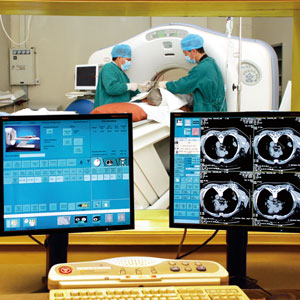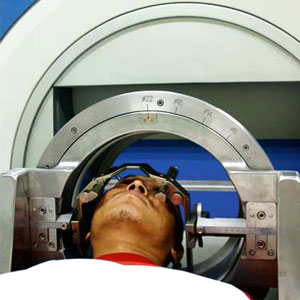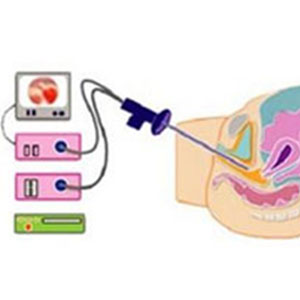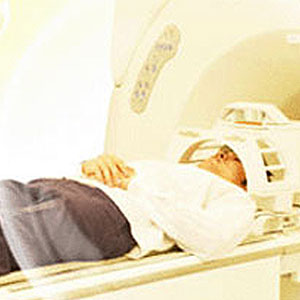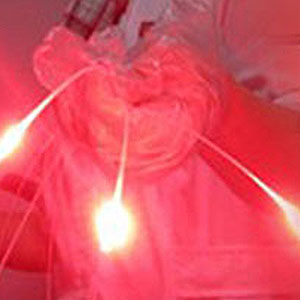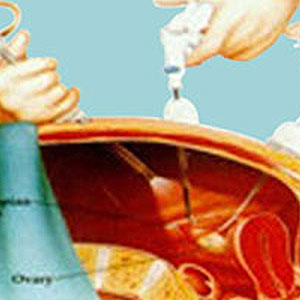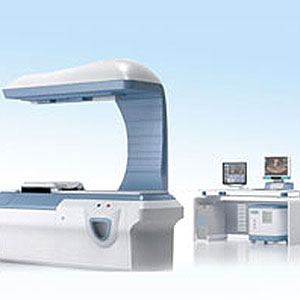Gamma Knife is also known as stereotactic gamma-ray radiation therapy. It employs modern computer techniques, stereotactic technique and surgical technique. Gamma Knife is not a normal scalpel. It uses beams of geometrically-focused gamma rays to focus on the target through precise stereotactic position and a certain dose of gamma rays is delivered to the site where all the beams meet to massively destroy the targeted tissue at once. This result is similar to an actual surgical procedure. As the healthy tissues are in the outside of lesion and focused-on single beam of gamma rays, there will be no harm to healthy tissues in such low energy. By using a magnifying glass, the sunshine is narrowed to a highly localized area. This results in a concentration of heat that can reach incredibly high temperatures. If a high enough temperature is reached, the kindling will smolder and begin to burn. However, there will be no burning in the other area. This phenomenon can further explain how the gamma knife radiosurgery works. As there is distinct boundary between the range of radiation and healthy tissues, which seemed like cutting by a knife, this therapy is called gamma knife. Gamma knife has the advantages of non-invasiveness, no need for general anesthesia and actual surgery, no bleeding and inflammation.
Gamma knife can be divided into head gamma knife and body gamma knife. Head gamma knife is used to treat small tumors and other functional diseases in the brain while body gamma knife is mainly applied in treating all kinds of whole body tumors.
Indications of Head Gamma Knife
1.Brain tumors whose size is within 30mm, such as acoustic neuroma, pituitary adenoma, meningioma, pineal region tumor and lymphoma, etc.
2.Cerebral arteriovenous malformation (AVM)
3. Cavernous hemangioma
4.Benign tumors that cannot be completely eradicated through surgery
5. Intracranial metastatic carcinoma of small size and clear tumor demarcation
6. Functional neurological disorder like primary prosopalgia or prosopalgia that fail to be treated with drug, intractable pain, dyskinesia, epilepsy and other functional diseases caused by Parkinson's disease.
7.Spinal cord tumor of cervical spinal nerve 7 (C7) and above
8.Extracranial head and neck tumors
9.Senior citizens, patients with chronic diseases like diabetes, hypertension, heart disease, people that are weak, brain cancer patient that can’t tolerate surgery and conventional radiotherapy.
Indications of Body Gamma Knife
Indications of body gamma knife include nasopharyngeal cancer, laryngeal cancer, thyroid cancer, primary and metastatic lung cancer, primary and metastatic liver cancer, pancreatic cancer, gallbladder cancer, bile duct cancer, metastatic cancer of lymph node in neck, hilum of lung, mediastinum, abdominal cavity and pelvic cavity, esophagus cancer, gastric cancer, mediastinal tumor, kidney cancer, rectal cancer, bladder cancer, prostate cancer, lymphoma, malignant thymoma, gynecological tumors like cervical cancer and ovarian cancer, primary bone tumor, bone metastasis and all kinds of sarcomas.
Gamma knife radiosurgery can be a locally radiotherapy boost treatment for the residual tumors and serve as an alternative radiotherapy for treating recurrence after the patient finish taking the conventional radiotherapy.

